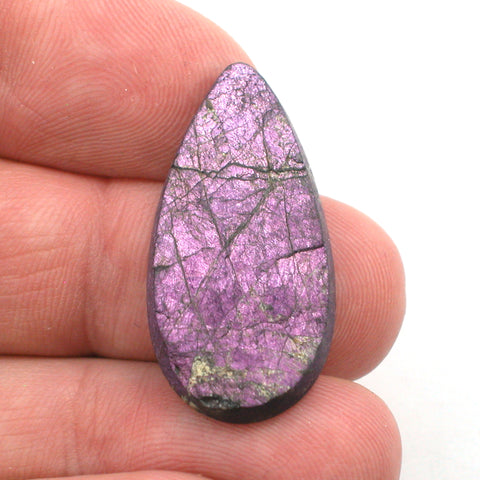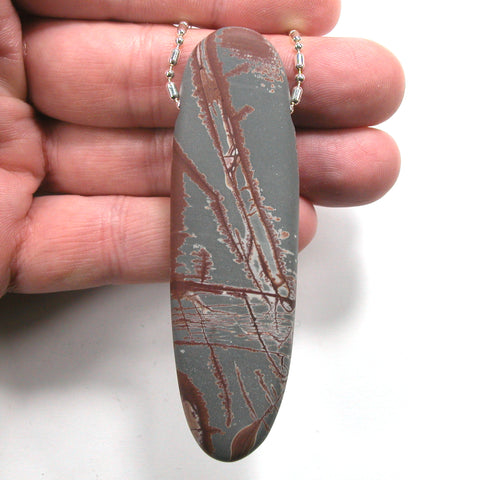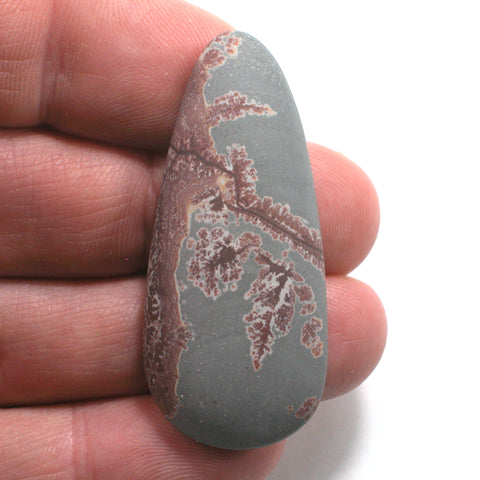This stone is natural chrysocolla with cuprite. I hand cut this freeform shaped cabochon. Polished finish. Measurements are shown in the listing title in millimetres. I made this using a beautiful and striking stone called "Sonora Sunrise" that has only been on the market since around 2007. It is a mixture of wonderful turquoise colored, sky blue chrysocolla, orange-red cuprite, and sometimes with black veins of tenorite. There are sometimes little dots of green that I believe to be brochantite and one dealer seems to claim that the massive blue is colored by brochantite as opposed to chrysocolla. They are ALL copper minerals, so who know's how God/dess's spun them together at their moment of creation! It came from a now closed copper mine in Sonora, Mexico. Compare with other pieces for sale online and you'll see that DVHdesigns cut Sonora Sunrise stands out from the rest! I've never seen anyone else cut bead pendants out of this stuff like I do.
The stone inherits the metaphysical properties of its components, creating a unique synergy. Chrysocolla, known for its soothing energy, aids in communication and expression. Cuprite brings grounding energies and supports vitality. Tenorite enhances intuition and insight. Together, Sonora Sunrise is believed to facilitate emotional balance, communication, and spiritual awareness. It is often used for meditation, promoting harmony and a deeper connection with the Earth's energies.
Here's some information on the chrysocolla part of the stone that I easily found on the internet.... "Chrysocolla (hydrated copper silicate) is a mineral, (Cu,Al)2H2Si2O5(OH)4·nH2O. It is of secondary origin and forms in the oxidation zones of copper ore bodies. Associated minerals are quartz, limonite, azurite, malachite, cuprite, and other secondary copper minerals.....Chrysocolla has an attractive blue-green colour and is a minor ore of copper, having a hardness of 2.5 to 3.5. It is also used as an ornamental stone. It is typically found as glassy botryoidal or rounded masses and crusts, or vein fillings. Because of its light color, it is sometimes confused with turquoise. Commonly it occurs only as pourous crusts unsuitable for gem use, but high quality, gem grade chrysocolla can be translucent and is highly prized.....The name comes from the Greek chrysos, "gold", and kolla, "glue", in allusion to the name of the material used to solder gold, and was first used by Theophrastus in 315 BCE."
Here's some information on the cuprite part that I also found online... "Cuprite is an oxide mineral composed of copper(I) oxide Cu2O, and is a minor ore of copper.....It is a secondary mineral which forms in the oxidized zone of copper sulfide deposits. It frequently occurs in association with native copper, azurite, chrysocolla, malachite, tenorite and a variety of iron oxide minerals. It is known as ruby copper due to its distinctive red color....Cuprite was first described in 1845 and the name derives from the Latin cuprum for its copper content."









